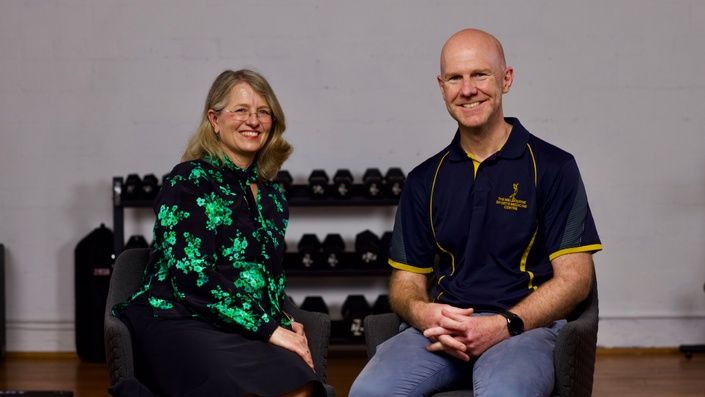Introduction
The Early to Mid Stage ACLR Rehab Masterclass, taught by A/Prof Jane Rooney and Mick Hughes, provides a complete overview of the assessment and management of the ACL. This Executive Summary provides clinically relevant, actionable information that may be useful to health professionals.
Part 1: Early ACLR Rehab Considerations
The aim for early stages of rehab is to restore knee function and establish realistic and specific individual goals. The considerations include the graft site, ligament healing process, patient occupation and concomitant injuries.
- The early stages of injury should be to achieve a “quiet knee” with no quads lag, full ROM and lots of forward/backwards walking training.
- The outcome after the intermediate phase (5-6 months) should be 80% LSI for quads, hams and single leg (SL) hop tests.
- Gait retraining should be optimising and normalising gait patterning and introducing one new skill at a time.
Part 2: Weeks 4-8 Exercise Considerations
In the early phase, the exercises should target all key muscle groups starting from double legged to single legged and often starting with closed chain and progressing to open chain. The clinician should follow a framework of exercise prescription rather than a strict protocol as each patient presents differently.
- Cycling is an effective way to challenge the PFJ without stressing the ACL graft and improves cardiovascular workload.
- It is safe to commence loaded leg extensions from 8-12 weeks onwards, however depending on the patient’s training background and goals, OKC exercises may be introduced earlier.
- With the hamstring graft population, clinicians should be careful how early they introduce loaded OKC hamstring curls, considering the tendon-bone inclusion.
- Neuromuscular training that include balance, agility and plyometrics help patients regain trust in their knee.
Masterclass Preview
Return to running and jumping is a common goal for most ACLR athletes. However knowing when to start is one of the biggest challenges.
Enjoy this free preview of Mick and Jane discussing some common exercises to prepare for a running and jumping program in ACLR rehab.
Part 3: Weeks 8-12 Exercise Considerations
Carrying on from the initial stages of rehab, this next stage is building on the strength gained and preparing the athlete for running, jumping and landings. This phase consists of quad, hams, glutes, adductor, trunk and balance exercises with a battery of assessments for a return to running.
- Pogos/skipping rope and tall to shorts/snap downs are good plyometric exercises for preparing the knee for more jumping and running drills.
- Clinicians should wait at least 3 months, pain <2/10, >70% LSI quads and ham strength, >70% LSI on SL hop, minimal swelling and 10-20 good vertical hops before running is introduced.
Part 4: Return to Training Overview and Common Problems
The program should be tailored to the patient’s goals, taking into account the physical and mental readiness and the time for sufficient biological healing. Common issues post ACLR that can occur include patellofemoral pain, persistent effusion, stiffness or laxity, graft site irritation and/or graft re-rupture.
- As soon as possible post injury, obtain a strength measure of the unaffected side, so the LSI can be compared closer to their baseline measurements.
- Hop tests include the SL hop, triple crossover hop, vertical drop jump and side hop.


